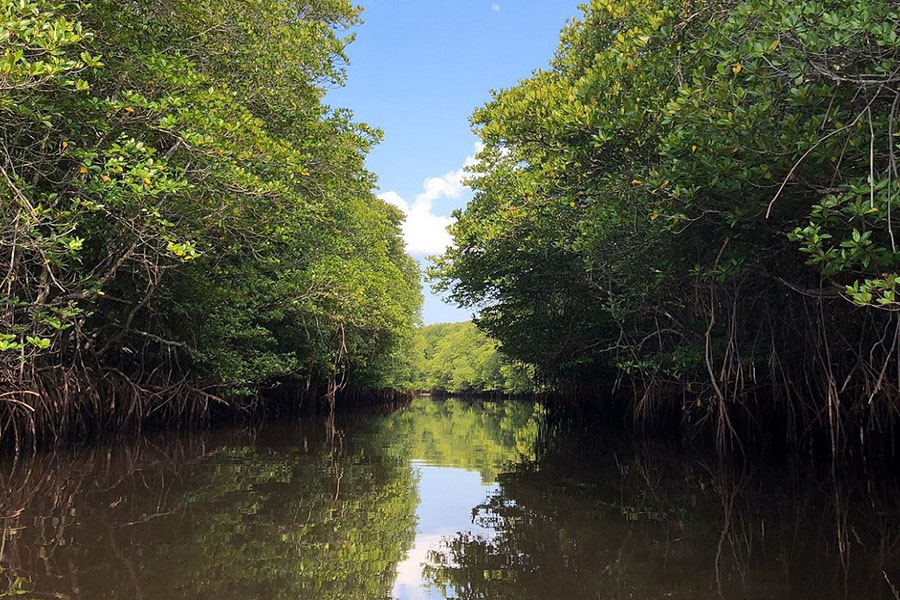MANGROVE FOREST LEMBONGAN
MANGROVE FOREST LEMBONGAN IS AN IMPORTANT COASTAL AND MARINE ECOSYSTEM AT NUSA LEMBONGAN ISLANDS

Mangrove Forest Lembongan is a tourist destination where visitors can enjoy the beauty of unspoiled mangrove forests in Nusa Lembongan. The beauty of the forest filled with mangrove trees is very interesting to explore, especially with the cool air that adds a pleasant impression during a tour in this mangrove forest. To enjoy the beauty of this mangrove forest, visitors use traditional boats without engines so as not to damage the ecosystem. With the help of professional guides, visitors will be invited to visit every corner of the mangrove forest for a rare and unique experience in the Mangrove Forest of Nusa Lembongan Island.
If you visit Mangrove Forest Nusa Lembongan, here’s what you need to know:
- Location of Mangrove Forest
- Nusa Lembongan Islands
- Mangrove Forest at Nusa Lembongan
- Mangrove Forest Tourist Attraction
- Mangrove Forest Research
- Ecotourism of Mangrove Tour
- Kayaking in the Mangrove Forest
Location of Mangrove Forest
You can access this mangrove forest on Nusa Lembongan Island by sea transportation services such as speedboats, with the main port located at Sanur Port. This harbor is the same as the one used to cross to Nusa Penida. The trip from Kuta to Sanur Harbor takes about 15 – 30 minutes, while the trip by fast boat from Sanur to Nusa Lembongan takes about 30 minutes. After arriving at Nusa Lembongan, there are many transportation services available to take you to explore the island. However, if you want to avoid the hassle of buying speedboat tickets and renting land and boat transportation in Nusa Lembongan, we can help. Bali Driver Hire can arrange everything you need, from hotel transfers to the port, sea transportation by speedboat, land transportation to the mangrove forest location, to boat rental in Nusa Lembongan. We offer a Bali Nusa Lembongan Islands Tour program that includes all these facilities, including this mangrove forest tour. You just need to contact us, and we will take care of everything for you. Enjoy your vacation in Nusa Lembongan by enjoying the beauty of this enchanting mangrove forest.
Nusa Lembongan Islands
Nusa Lembongan is a small island located in the Nusa Islands, where there are three small islands that are close to each other and only separated by the ocean. The three islands are Nusa Penida, Nusa Lembongan, and Nusa Ceningan. Only Nusa Lembongan and Nusa Ceningan have a connecting bridge, known as the Yelow Bridge, that can only be crossed by motorcycles. Meanwhile, Nusa Penida and Nusa Lembongan are not yet connected, so it is necessary to use a speedboat to cross. The same applies if you want to get to Nusa Lembongan from Bali, where sea transportation is the main option. Nusa Lembongan’s natural state is still very natural, with many untouched attractions. One of them is the mangrove forest tourist destination on the Nusa Lembongan islands, which retains its distinctive naturalness. This mangrove forest has an important role for Nusa Penida and is protected by the government to prevent coastal abrasion and maintain the ecosystem on Nusa Lembongan island.
Mangrove Forest at Nusa Lembongan
Mangrove forests are an important part of the coastal and marine ecosystems in Nusa Penida District, in addition to coral reefs and seagrass beds. The majority of mangrove forests are found on Nusa Lembongan and Nusa Ceningan. Mangrove forests provide many benefits to the community as a breeding ground for various types of fish, shrimp, crabs, and other marine life. In addition, mangrove forests are also an attractive location for marine ecotourism and act as a natural protector of the beach from the impact of waves, thus helping to prevent abrasion. To effectively manage the mangrove areas of Nusa Lembongan and Nusa Ceningan, basic information is needed on the extent of the mangrove forests, the types of mangroves that grow there, and the fauna that lives around the mangrove areas. Information on these mangrove species is essential to determining which species are suitable for planting and to maximizing the use of these mangrove forests.

Mangrove Forest Tourist Attraction
Mangrove ecosystems in Nusa Lembongan and Nusa Ceningan are one of the conservation targets in the Nusa Penida Marine Protected Area (KKP), which is in the process of being established. With the establishment of the Nusa Penida Marine Protected Area (KKP), it is hoped that the mangrove ecosystems on the two islands can be preserved and provide sustainable benefits for the community in Nusa Penida District. Besides being an important asset for the environment, mangrove forests are also a tourist attraction in Nusa Lembongan and are included in the list of Klungkung places of interest that are worth visiting. Tourists can enjoy a fun adventure by exploring the mangrove forest using traditional boats, enjoying the stunning natural beauty, and observing the diverse types of mangrove trees up close. This experience not only provides insight into the functioning of the mangrove ecosystem but also enriches tourists’ knowledge of its uses and benefits for the surrounding environment.
Mangrove Forest Research
To maintain the sustainability of the ecosystem in this mangrove forest, research was conducted on various types of plants that grow there. Through this research, it is hoped that the community can find out about the plants in the mangrove forest and participate in preserving them to support the sustainability of the ecosystem. Observations of mangroves in Nusa Lembongan were carried out in six locations, while in Nusa Ceningan, they were carried out in two locations. From a total of eight observation locations, 13 mangrove species and 7 related plant species were found. The types of mangroves found in Nusa Lembongan and Nusa Ceningan are:
13 Types of Mangroves Plants
- Bruguiera gymnorrhiza (Lindur, Tanjang)
- Rhizophora apiculata (Bakau kacang, Jangkah)
- Rhizophora mucronata (Bakau hitam, Bakau gandul)
- Rhizophora stylosa (Bakau kurap, Tongke besar)
- Avicennia lanata (Api-api, Sia-sia)
- Avicennia alba (Api-api,-Sia-sia)
- Avicennia marina (Api-api, Sia-sia putih)
- Sonneratia alba (Prapat, Pedada)
- Lumnitzera racemosa (Terutun, Kedukduk)
- Ceriops tagal (Mentigi, Lindur, Parum)
- Xylocarpus molluccensis (Banang-banang, Jombok)
- Xylocarpus granatum (Banang-banang, Nyirih)
- Excocaria agalloca (Buta-buta, Madengan, Warejit)
7 Types of Associated Mangroves Plants
- Pandanus tectorius (Pandan)
- Hibiscus tiliaceus (Waru, Waru Laut)
- Terminalia catappa (Ketapang, Katapa)
- Calophyllum inophyllum (Camplung, Bintanguru)
- Caloptropics gigantea (Modori, Biduri, Thistle)
- Melia indica (Intaran)
- Gliricidia (sepium Gamal)
In general, mangrove diversity in Nusa Lembongan is very diverse. This is indicated by the presence of main components, additional components, and mangrove association components. Mangrove zonation does not apply in all areas. In Nusa Lembongan and Nusa Ceningan, the front zone consists of Rhizophora stylosa, Rhizophora apiculata, and Sonneratia alba. Meanwhile, the mangrove fauna (birds) is dominated by Collocalia esculenta, Nectarinia jugularis, Oriolus chinensis, and Pycnonotus goiavier. The results of the research conducted by scientist Marthen Welly provide a valuable contribution to the community’s understanding of this mangrove forest. It is hoped that the people of Nusa Lembongan can continue to protect the mangrove forest because of its importance to the island’s ecosystem, including the marine life that depends on it as well as the birds that only live there. In addition, protecting the mangrove forest also helps prevent soil erosion by sea water.
Ecotourism of Mangrove Tour
On the other hand, along with the development of tourism, there are various types of tourist attractions that have begun to emerge, such as the ecotourism business at the Nusa Lembongan Mangrove Center, which is growing rapidly. This is reflected in the number of eateries and rest facilities available along the road to the mangrove center. Local communities collectively preserve the mangrove forest and use it for their livelihoods. The community has formed a tour guide group that provides trips around the mangrove forest using small canoes. The mangroves in this area are still relatively natural and well-maintained. This location used to be one of the international mangrove projects, so visitors can find some trees with information about mangroves. You can visit this place and rent a boat to explore the mangrove forest, get a deeper understanding of the important role mangroves play in the surrounding ecosystem, and learn that there are various types of mangrove plants that live here.
Kayaking in the Mangrove Forest
If you are looking for a unique experience while exploring the mangrove forest, you can rent a canoe here. Canoe rentals are available to get around the mangrove forest, with a rental duration of about 1 hour, which is enough to enjoy kayaking in this area. One canoe can accommodate 2 people. Unless the person has a large and heavy body, then just use 1 canoe. Enjoy the thrill of kayaking while exploring the natural beauty of the mangrove forest in Nusa Lembongan. This experience is very exciting, where you can feel the sensation of paddling in the middle of the mangrove forest and see various types of mangrove plants that are well preserved here. This different experience will complete your adventure on the island of Nusa Lembongan, with cool air and a cool atmosphere in the mangrove forest.

